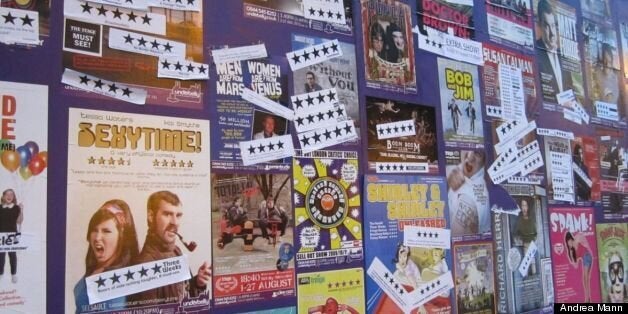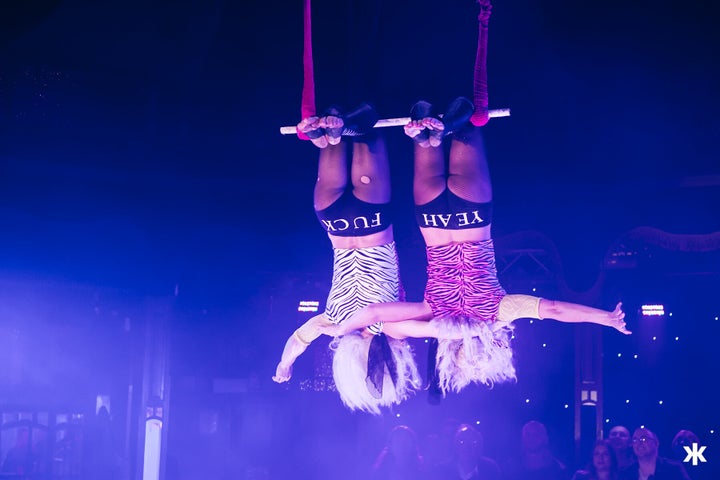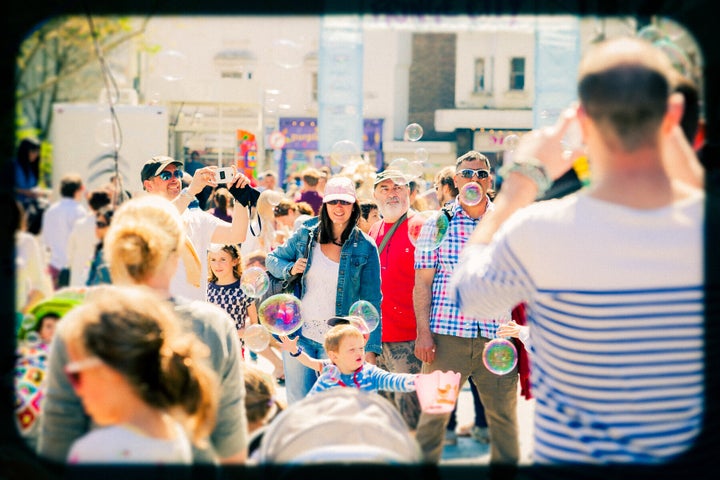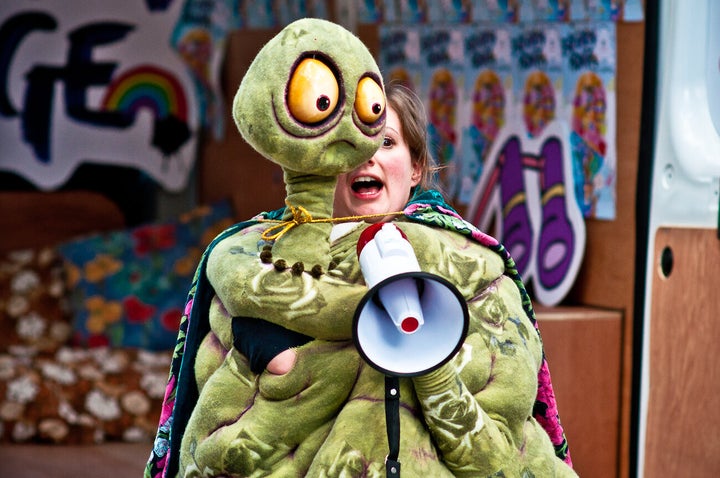

(credit: Dade Freeman)
The annual pilgrimage to the global arts mecca Edinburgh Festival Fringe officially began on Friday. And of course it's bigger than ever.
In 1948, when Robert Kemp first coined the word "fringe", little did he know where it would all end up. This Edinburgh-inspired open access format has revolutionised the arts across the planet. According to worldfringe.com, there are now more than 200 fringe festivals worldwide. From Brighton to Budapest, Oxford to O'ahu, Maidstone to Macau, the ubiquity of the fringe is complete. Wherever you reside, there is probably a fringe festival not far away, even when you least expect it. Indeed, after the end of Brighton Fringe, I disappeared to the wilds of Shropshire only to discover a huge banner proudly announcing "Welcome to Ludlow Fringe" as I tried to go shopping.
Since the end of Brighton Fringe this year I've experienced fringe festivals in Grahamstown South Africa, Buxton and Avignon ("le Off") and will be heading next to Edinburgh and then Amsterdam. Each has their unique flavour, specific to their location, culture, time of year or history but it's that very difference that brings them all together.

(credit: Dade Freeman)
They are all microcosms of the societies they inhabit. Exciting, imperfect, hopeful, opportunistic, angry and above all diverse. Everyone always has a view. It is the ultimate democratisation of art, empowering everyone: participants, audiences, promoters, journalists, young, old. It's the cruel, Darwinian proving ground for newcomers as much as it is for household names.
Where there are differences, there are disagreements and as it grows, with success comes dominance; every fringe has its factions. Recently in Edinburgh it's been Stewart Lee or Pippa Bailey, Charlie Wood and Mark Ravenhill. Each sharing a love for Edinburgh Fringe and each telling the others the best way to do it.
Not everyone likes fringe festivals, seeing their proliferation as the artistic equivalent of Japanese knotweed. The scale of the chaos is like the lunatics have taken control of the asylum. Already in 2002, Michael Billington called Edinburgh Fringe a "monstrous mixture of trade fair, rat-race, audition centre and showcase for sensation-seekers out to catch the gullible media" accusing it of slowly strangling the International Festival. Ouch. But guess what? 11 years since that article was published, surprise surprise, the International Festival is still alive and well. Of course they can and do cohabit, in Edinburgh just as they do in Brighton.

(credit: Paul Kondritz)
You could be sitting in a school hall, church, pub, toilet, back of a car or walking down the street: performance or visual art can happen anywhere. However large, it always feels edgy somehow. A bit rough and ready and yes, some of it is irredeemably awful but the transient buzz of experiencing performance in a pop-up theatre space is something that you could never find in the West End.
Chronically underfunded, defiantly commercial or both, the inherent fragility of fringe festivals has also become their greatest strength. Everyone mucks in and makes do, building a resilience that defies sound logic. As Britain languishes in the doldrums, Brighton Fringe saw ticket sales grow by more than 30% in one year. And it's surely not alone.
Despite funding cuts, with a healthy fringe, the arts are in better shape than ever. So, wherever you are, whatever you do, take the time to discover, go off the beaten track. Once you experience it, you'll soon be as addicted as I am.
